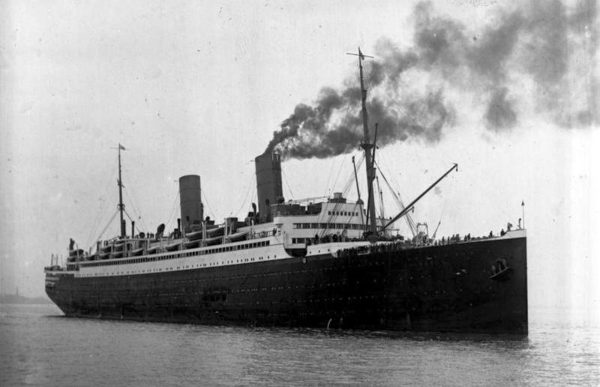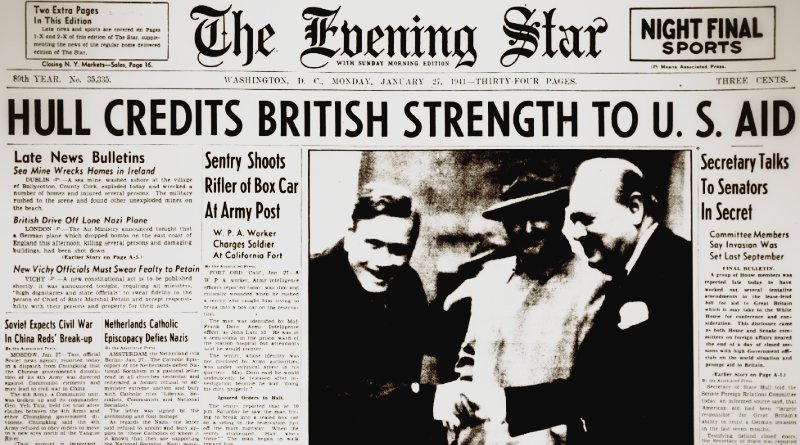World War II Chronicle: January 27, 1941
Click here for TODAY’S NEWSPAPER
Below the fold on the front page is a story on captured German seamen building what will become their prisoner of war camp. These men are the captured crew of the German liner Columbus and had previously been detained on Angel Island in San Francisco Bay.
Their ship, originally named Hindenburg, was laid down before World War I, but material shortages during the war halted construction of the 32,000-ton vessel. After the war her sister ship, the original Columbus, was sent to Britain as reparations, one of several German liners bought by Titanic‘s White Star Line. Hindenburg was renamed Columbus and became Germany’s fastest and biggest ocean liner in 1924.

When Germany invaded Poland on Sept. 1, 1939, Hitler ordered Columbus to return. After dropping passengers off at Cuba she headed for Veracruz, Mexico, staying until the crew was ready to run the British blockade on Dec. 14. Seven American destroyers escorted the German liner through our 300-mile neutral zone, but five days after setting sail, and some 400 miles off the coast of Virginia, Columbus was intercepted by the British destroyer HMS Hyperion.
Rather than face capture, the crew scuttled their ship. The British destroyer wouldn’t have room for the shipwrecked Germans, but the American cruiser USS Tuscaloosa was shadowing the action. Our sailors took the 576 men, women, and boys on board, splitting the the Germans between the seaplane hangar and sick bay and sailed for New York City. The survivors, glad not to be British prisoners of war, disembarked for processing at Ellis Island on the 20th.
13 months later 411 crew members remained in the United States where they would spend the remainder of the war in Fort Stanton, New Mexico…
On page nine: a Luftwaffe ace has turned himself in to American authorities after escaping a Canadian prisoner-of-war train and paddling across the St. Lawrence River. Baron Franz von Werra was originally captured after his Messerschmidt Bf-109 was shot down over Kent last year. The German consulate bailed him out and helped the pilot escape to Mexico, making his way to South America. He then travels to Spain and Italy before returning to Germany. Once there he reports on how well he was treated, which results in less harsh conditions for Allied pilots held captive by the Germans. Von Werra takes over as commander of I. Gruppe of Jagdgeschwader 53 and is killed in a plane crash in October 1941…

Sports begin on page 14. Page 15 features Grantland Rice’s interview with Ty Cobb. It seems like we are so far removed today from baseball legends like the Georgia Peach, but he was only 54 in 1941. Ken Griffey Jr. — “The Kid” — is as old now as Cobb was when he sat down with Grantland Rice. Hard to believe, right?

Evening star. (Washington, D.C.), 27 Jan. 1941. Chronicling America: Historic American Newspapers. Lib. of Congress.
https://chroniclingamerica.loc.gov/lccn/sn83045462/1941-01-27/ed-1/
